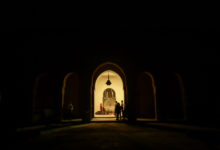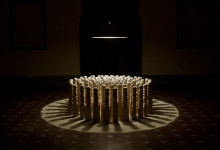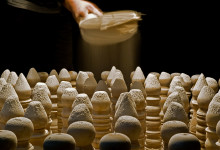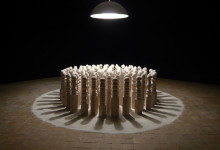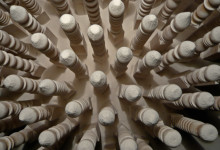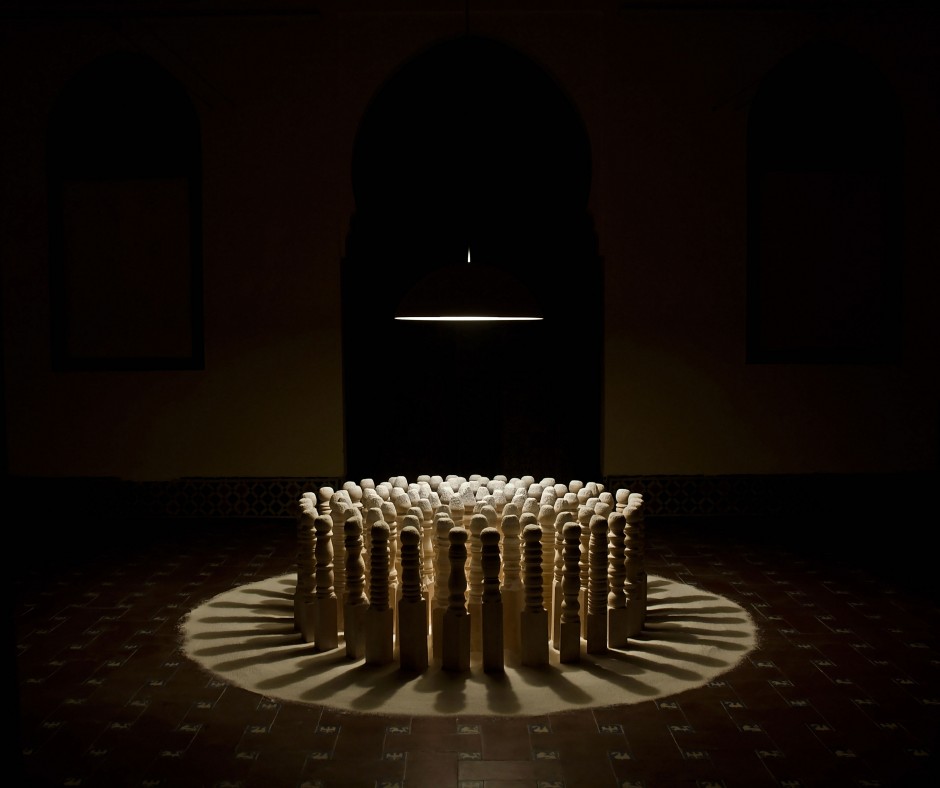
The term “Tayfor” refers to the traditional Moroccan three- or four-legged low table. The installation is comprised of one hundred table legs placed in a circular form on the ground. These table legs, sculpted with different motifs, were inspired by a nickname that is sometimes given to the artist’s city: “Tetouan, the city of a hundred minarets.”
Measuring 50 cm, the legs are topped with a kind of cupola and divided into three groups of thirty-three legs. The base of the first group of legs is sculpted to be 20 cm high, while that of the second group is 15 cm high, and that of the last group is 10 cm high. Only one of the legs has a 5 cm high base.
Lime, sprinkled by the artist over the top of the installation with the help a sieve, forms a white circle on the ground which makes the shadows of the table legs stand out. These shadow are accentuated by a light diffused by a cupola-shaped lamp hung at eye-level, which illuminates the installation from above.
Younes Rahmoun explains: “The lamp’s half-sphere represents the sky in the divine sense with the light that comes from it. Lime is a reference to the city of Tetouan, which uses it a lot in construction. At the same time, the powder recalls flour, a basic nutritional element whether one is rich or poor. Here, the table is the symbol of coming together. The one hundred legs can in fact be considered like one hundred people who come together but if look closely, we see that each one is different.”
